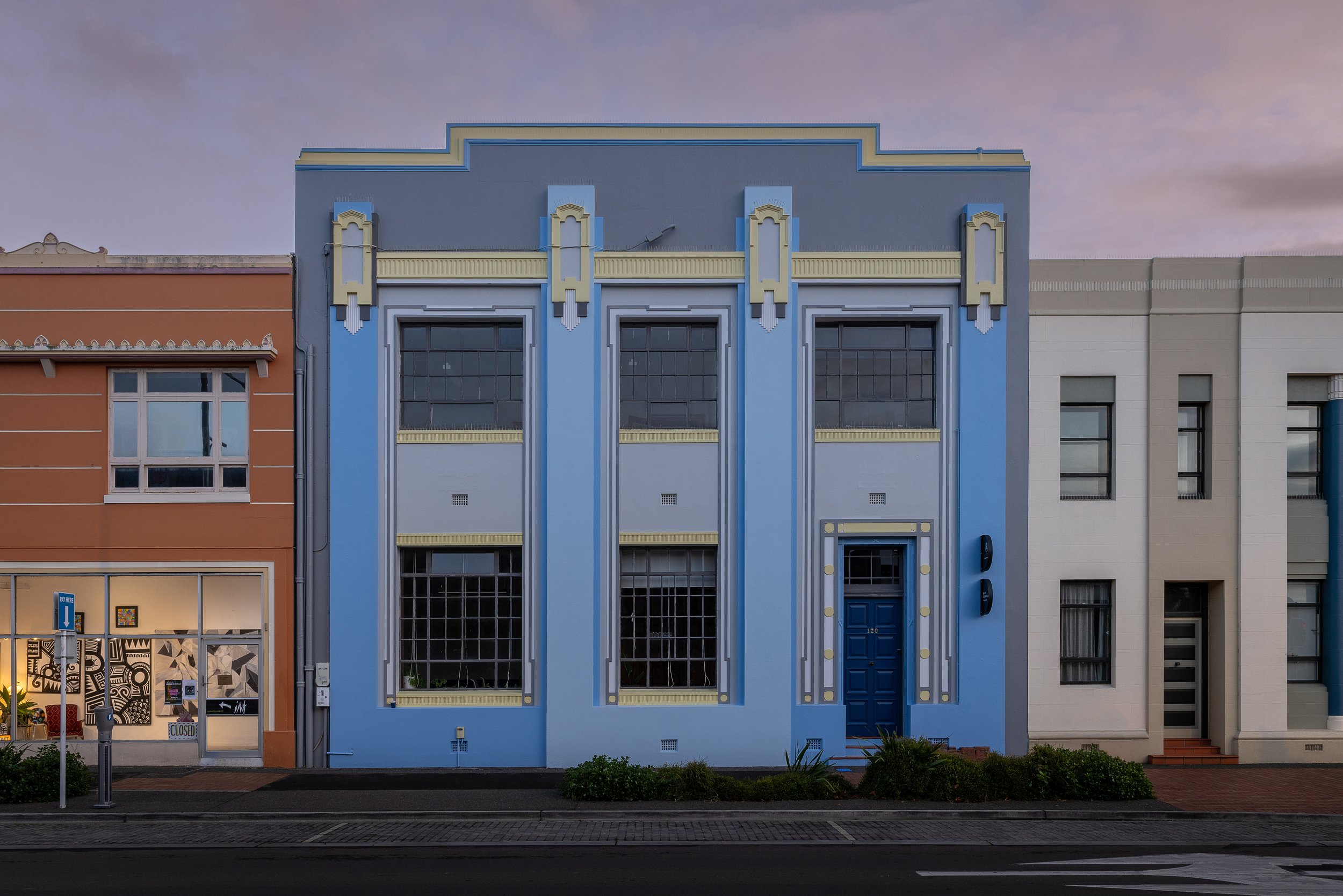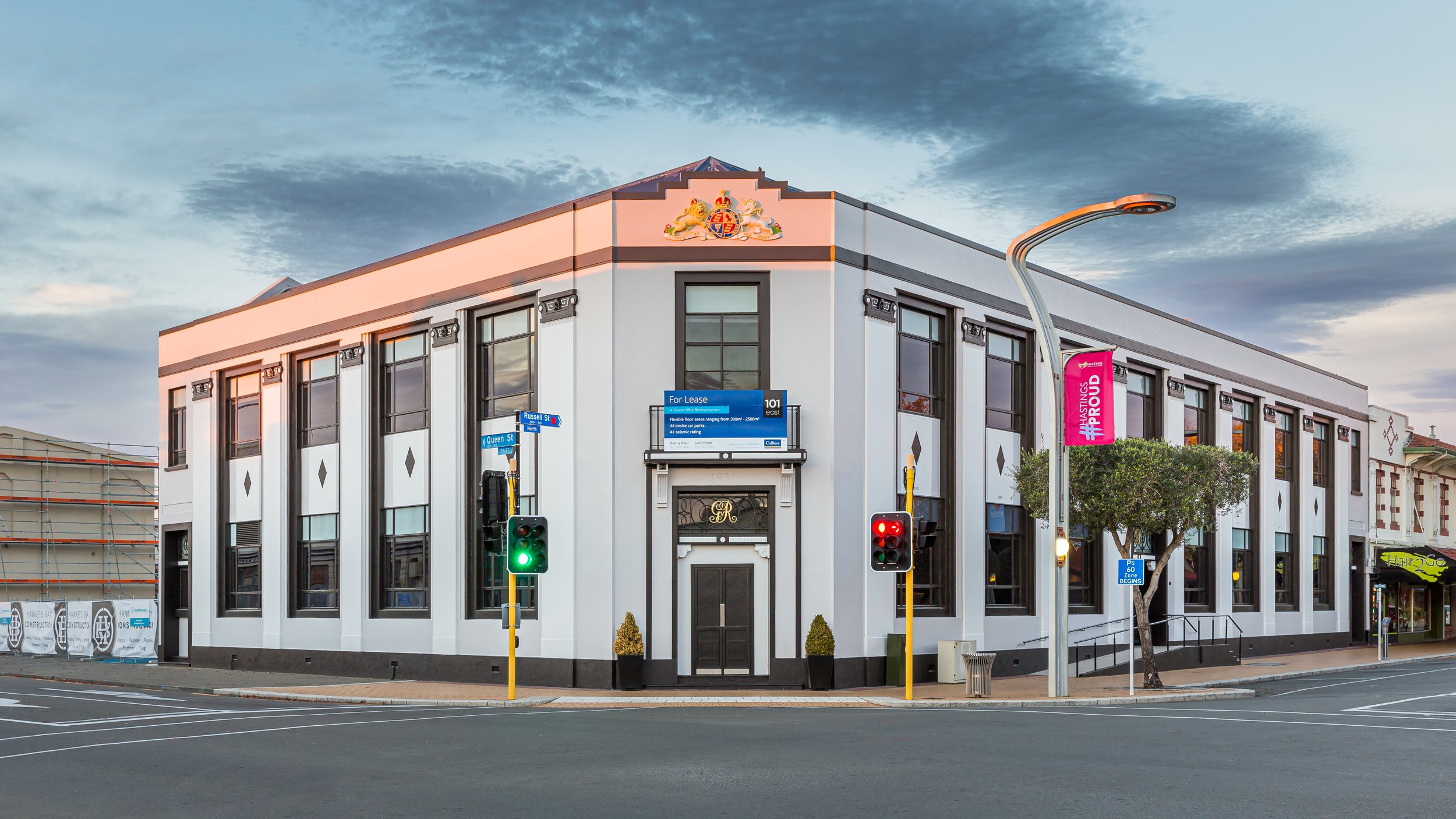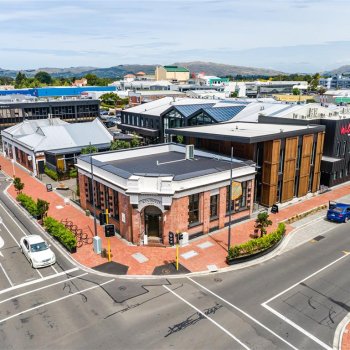Hastings - unsung Art Deco capital of Hawke’s Bay?
Now, all good children of Hawke’s Bay know at least the rough story of the 1931 earthquake that destroyed both the Napier and Hastings CBD’s - changing them forever.
For those that aren’t as familiar with this story, a quick google will tell you “The 1931 Hawke's Bay earthquake, also known as the Napier earthquake, occurred in New Zealand at 10:47 am on 3 February, killing 256, injuring thousands and devastating the Hawke's Bay region. It remains New Zealand's deadliest natural disaster. Centred 15 km north of Napier, it lasted for two and a half minutes and had a magnitude of 7.8.”
Napier CBD features heavily (if not entirely) in the story of this formative event for the region given its total destruction and horribly high death toll, but what is not known so widely is the story of Hastings.
We spoke with local Hawke’s Bay historian, and knower of all things Art Deco - Michael Fowler, to learn about exactly how Hastings came to be what it is today. Below is a brief summary of his incredible depth of knowledge.
Life in Hastings CBD pre February 1931 was bustling, and vibrant. The CBD had grown to a substantial 15 blocks and was known as Hawke’s Bay's shopping centre catering for people throughout the region.
As was usual at that time, the CBD was primarily built in unreinforced masonry, so when the earthquake hit the area was destroyed in an instant. Hastings rebuilt quickly, and by the end of 1932, well over two hundred new buildings were in place creating a modern CBD with an incredible streetscape of Art Deco buildings that we continue to enjoy today. Next time you are on your lunch time walk keep an eye out for the buildings mentioned below.
The Russell Street block that runs alongside the railway track is an impressive example of the Spanish Mission style of architecture. This relatively small area had 5 of the 8 buildings destroyed in the earthquake, and most were rebuilt in this style. One building of particular note is the Westermans building found on the corner of Russell and Heretaunga Street. Originally a drapery store, it still has many of its original features such as the Wunderlich verandah pressed metal designs, leadlight windows and terrazzo entrance - with the "W". The eagle eyed among us may even spot the "W'' cast into metal air vents just above the pavement level. It is a great example of the detail in design that is attributed to Art Deco architecture.
Along the same street is a building which stands apart from its neighbours - the former Hastings Post Office (found on the corner of Russell and Queen Street East). Used as a post office for 90 years, it was one of the most important government buildings in Hastings and arguably the building of greatest familiarity to locals. It was destroyed in the earthquake, with the collapse of its tower leading to the death of one man and injuries to many others. It was rebuilt in the stunning Stripped Classical style and has recently undergone a fantastic makeover, bringing it back to its former glory.
With over 200 buildings rebuilt following the earthquake, there are of course several different styles to be celebrated. One of Michael’s favourites is the unassuming Las Palmas building on King Street which is the only example in Hawke's Bay of a "Moderne-style" Art Deco building. This is a late style Art Deco building - and represents a change in style from those that came before, focussing more on the American ideals of advances in technology and industry, such as new faster stream-lined locomotives and aeroplanes and skyscrapers in New York.
There were of course buildings that survived the earthquake - a grand total of 15. One of these is the Public Trust Building on Queen Street. Its construction was completed in 1926, but built in reinforced concrete in the Art Deco Stripped Classical Style it remained standing. It has also recently completed a facade enhancement with its presence continuing to add to the unique look and feel of our current CBD.
A thank you must of course go to the owners of the buildings today. Keeping 100 year old buildings looking stunning is not an easy job, and we are forever grateful to those that are committed to preserving the characteristic heritage of their buildings. One fantastically fun example of this is 120 Karamu Road North, home of Bad Company. Now a show stopping blue with yellow highlights, building owners took advantage of the Hastings District Council Facade Enhancement Scheme, choosing a heritage colour palette that for the building that is both aesthetically pleasing and sensitive to the colour schemes of adjacent buildings. Bold, yet appropriate choices such as this is what makes our city pop, and continue to be a fun, modern place to work, live and play.
No matter where you are in Hastings CBD you can find beautiful Art Deco buildings. Thanks to the strength, determination, foresight and bravery of those that lived through this disaster, we are now simply surrounded with gorgeous architecture. Their stories are forever part of our everyday lives, and for that, we thank them.
If you would like to pick Michael’s brain further on this topic, follow him on Facebook, or even book him for your very own private tour. Email him to mfhistory@gmail.com to arrange.





